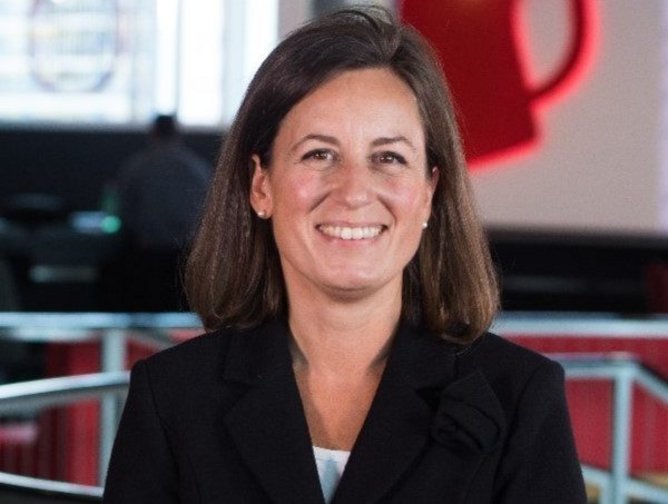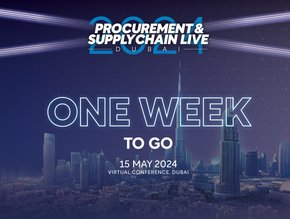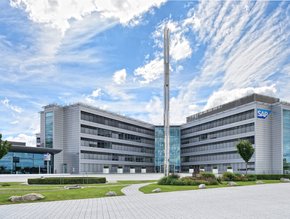What is ‘climate-smart sourcing’ at Nestlé?

A detailed analysis of Nestlé’s greenhouse gas emissions when setting their 2018 baseline showed that 95% of their footprint was made up of Scope 3 emissions from activities in their
supply chain such as farming and land use, and just 5% was Scope 1 and 2 emissions from their own operations.
Carefully selecting suppliers
One of the approaches the company is taking to tackle emissions is their global supply chain and procurement operations. In different parts of the world, farmers are at different stages of the transition toward regenerative and more sustainable agriculture practices. One method the company is following to reduce their footprint is by switching procurement to suppliers in locations that already have regenerative agriculture practices in place. This is being done simultaneously while helping farmers in other regions who are not so compliant to make the transition as well.
In Nestlé’s Creating Shared Value Sustainability Report, the Head of Climate Change and Sustainable Sourcing Benjamin Ware explains that climate smart sourcing is a key tool for them to utilise.
“The bulk of our carbon footprint is already present when we purchase raw materials such as dairy, coffee, cocoa, palm oil and meat,” he explains. “Packaging and shipping are much less significant – only a fraction of the carbon footprint compared with how the raw material is produced. This means selecting ingredients produced using climate-smart practices can make a significant difference, even if they are shipped from further away.”

The challenges of climate smart sourcing
There are challenges in this work as all decisions need to be supported by accurate data from suppliers. There are also pre-existing arrangements that have to be respected during any transition process.
“In many places, we have pre-agreed volume commitments upon which people’s livelihoods depend,” continues Ware. “Clearly, economic viability and security of supply still factor in purchasing decisions. And let’s not forget taste – different regions often grow different varieties of a crop that can taste slightly different and impact recipes.”
“Despite these challenges, shifting sourcing in this way is already underway, as exemplified by the total volume of our commodities now coming from assessed deforestation-free verified origins or certified as sustainably produced. This accounts for 25% of the Scope 3 emissions saved through implementation of our Net Zero Roadmap.”
Plastic procurement and supply chains
Nestlé is also making considerable progress in reducing its packaging, creating better packaging, and improving waste management. Since signing up to the Global Commitment on plastic waste five years ago, the company and other leading signatories have significantly outperformed the market at large in reducing virgin plastic and increasing recyclability, according to a recent report from the Ellen Macarthur Foundation.
"We are continually pursuing better packaging solutions where we can have a direct impact," said Antonia Wanner, Nestlé's Head of ESG Strategy and Deployment. "With our in-house packaging experts and scientists, we are developing the next generation of packaging materials as well as redesigning packaging for the circular economy. In addition, we promote better infrastructure systems for waste management, advocate for harmonised regulation, and encourage behavioural change."

Using less packaging
Nestlé is working to reduce the amount of its packaging overall. The company has reduced its amount of virgin plastic packaging by 10.5% since 2018, and it is on track to get to one-third less virgin plastic by the end of 2025. In 2022 it launched new Nescafé Dolce Gusto capsules that have less plastic weight and will save more than 2 500 tonnes of polypropylene. In 2019, Nestlé passed peak virgin plastic consumption as well as peak carbon emissions, even as the business continued to grow.

The company cut the weight of its total product packaging by 200 000 tonnes in 2022, and with that, reduced its greenhouse gas emissions by 280 000 tonnes. It also reduced its number of packaging pieces by 14 billion last year. Nestlé's historic total packaging footprint was down from 4.7 million metric tons in 2018 to 3.6 million metric tons in 2022.
Nestlé is also testing and sourcing packaging alternatives by piloting reuse and refill solutions. Since 2018, it has run over 20 reuse and refill pilots in 12 countries. In Germany, for example, Nestlé, in collaboration with start-up Circolution, has piloted reusable stainless-steel containers for Nesquik. Building on its learnings, the company continues to test different reuse and refill solutions around the world and advocate for the necessary enabling conditions.
Designing better packaging
At the same time as reducing its packaging, Nestlé is also sourcing and increasing the use of recycled plastics in its packaging, contributing to the circular economy for plastics. At the end of 2022, 7.7% of the company's plastic packaging was recycled content, and it aims to get close to 30% by the end of 2025. In the UK, for instance, Nestlé's waters business has moved its entire Buxton Natural Mineral Water range to 100% recycled PET.
The company is also committed to designing 100% of its packaging for recycling systems. To date, 81.9% of Nestlé's total plastic packaging is already designed for recycling. Nestlé aims for more than 95% of its plastic packaging to be designed for recycling by the end of 2025.
*************************************************
For more insights into Procurement & Supply Chain - check out the latest edition of Procurement Magazine and be sure to follow us on LinkedIn & Twitter
Other magazines that may be of interest - Supply Chain Magazine | Sustainability Magazine
*********************************************
BizClik is a global provider of B2B digital media platforms that cover 'Executive Communities' for CEOs, CFOs, CMOs, Sustainability Leaders, Procurement & Supply Chain Leaders, Technology & AI Leaders, Cyber Leaders, FinTech & InsurTech Leaders as well as covering industries such as Manufacturing, Mining, Energy, EV, Construction, Healthcare + Food & Drink.
BizClik, based in London, Dubai & New York offers services such as Content Creation, Advertising & Sponsorship Solutions, Webinars & Events.
- How Nestle is Creating Better Lives for its Cocoa FarmersSupply Chain Management
- Nestle : Procurement Strategy Powers Sustainability ProgressSustainability
- What is the GSK Sustainable Procurement Programme?Sustainable Sourcing
- Procurement’s crucial role in a circular economySustainability






